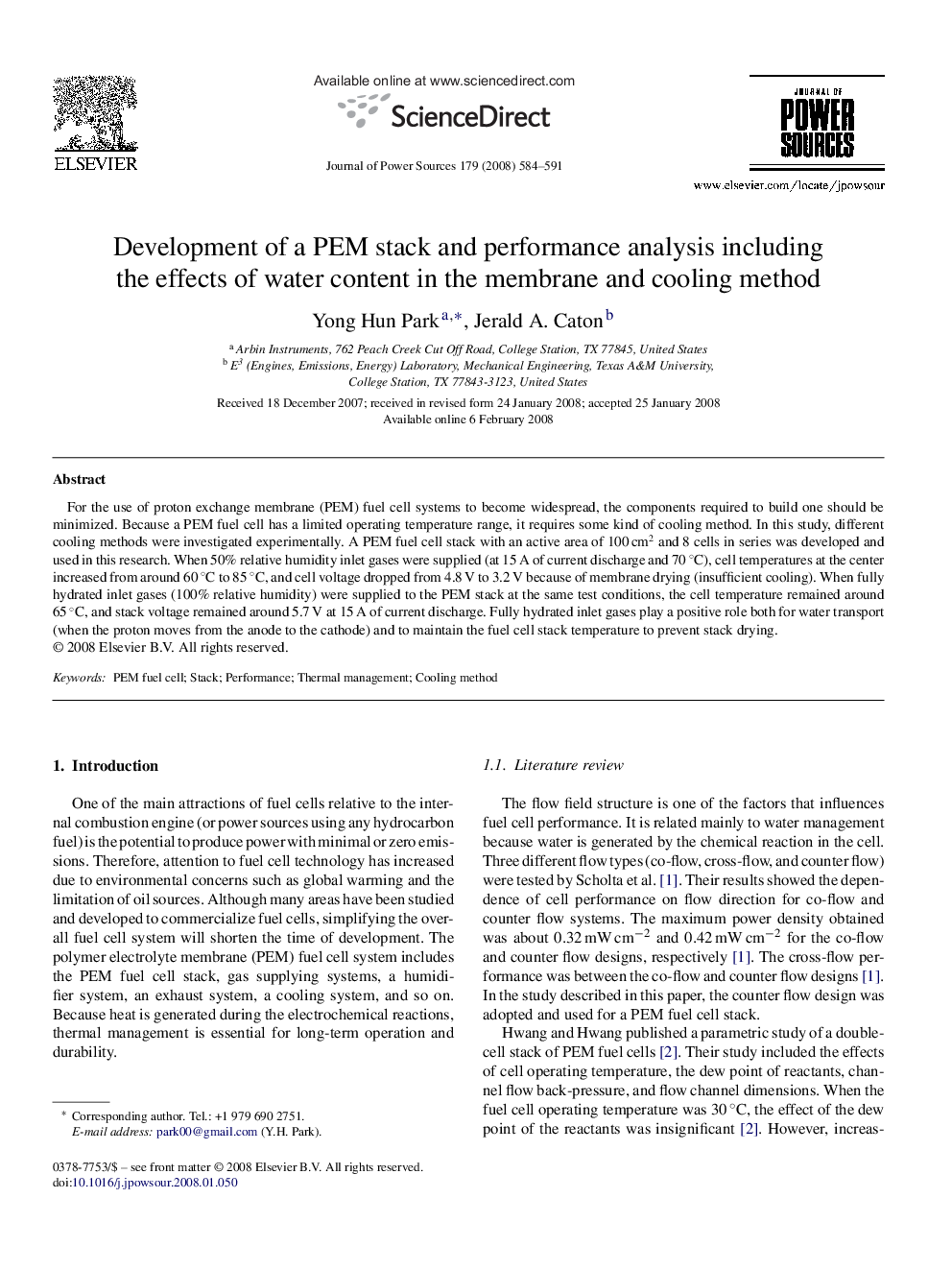| Article ID | Journal | Published Year | Pages | File Type |
|---|---|---|---|---|
| 1294684 | Journal of Power Sources | 2008 | 8 Pages |
For the use of proton exchange membrane (PEM) fuel cell systems to become widespread, the components required to build one should be minimized. Because a PEM fuel cell has a limited operating temperature range, it requires some kind of cooling method. In this study, different cooling methods were investigated experimentally. A PEM fuel cell stack with an active area of 100 cm2 and 8 cells in series was developed and used in this research. When 50% relative humidity inlet gases were supplied (at 15 A of current discharge and 70 °C), cell temperatures at the center increased from around 60 °C to 85 °C, and cell voltage dropped from 4.8 V to 3.2 V because of membrane drying (insufficient cooling). When fully hydrated inlet gases (100% relative humidity) were supplied to the PEM stack at the same test conditions, the cell temperature remained around 65 °C, and stack voltage remained around 5.7 V at 15 A of current discharge. Fully hydrated inlet gases play a positive role both for water transport (when the proton moves from the anode to the cathode) and to maintain the fuel cell stack temperature to prevent stack drying.
